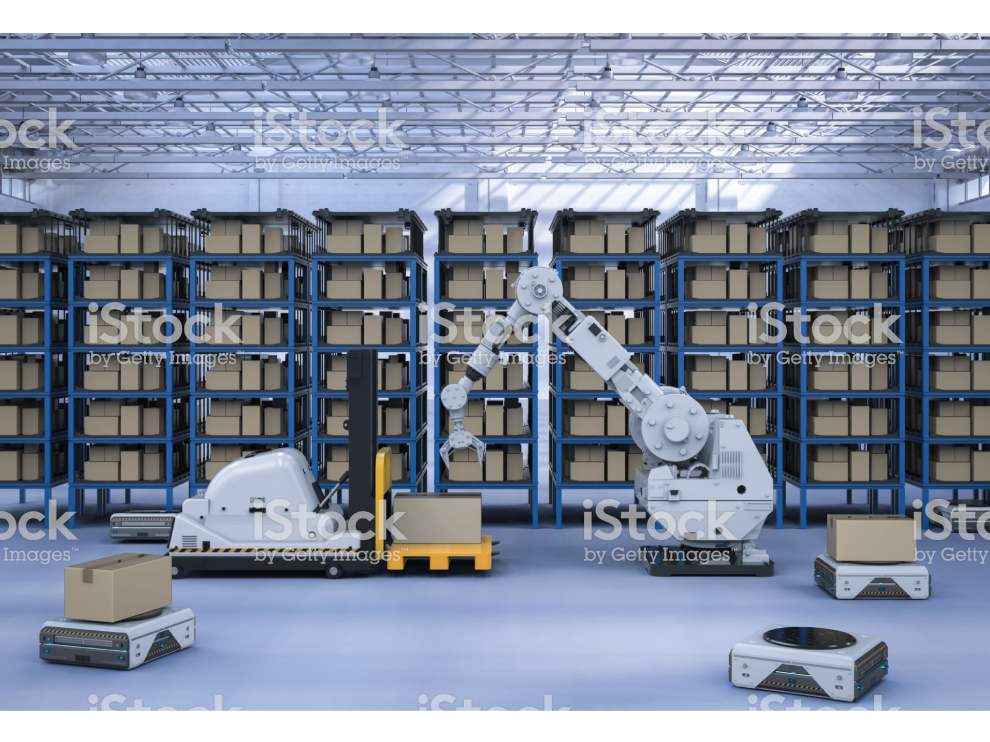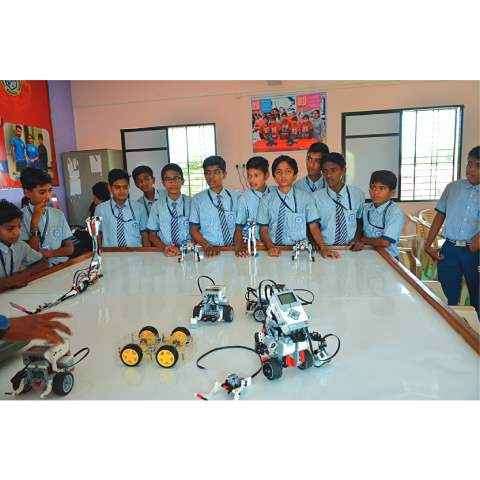Exploring a career as a robotics engineer

A fair share of individuals can safely say that, at some point or the other, they have been fascinated by robots. Films and TV series only fuel this captivation by showing robots that can take on huge workloads, make life easier for humans and also, take over mundane, menial tasks. Additionally, movies such as Transformers display the anthropomorphisation of robots, not just when it comes to looks but also character and personality traits.
Such 'personification' has inspired generations of young individuals to take up robotics courses where they can tinker around with machines and build their own 'life-like' robots. This early onset of fascination has definitely helped the field grow by leaps and bounds, however, the career itself is extremely dynamic, has a lot more depth and a wide array of use cases, especially in todays technologically-advanced world where AI and ML are thriving.
Robotics, in simple words, is a branch of engineering which deals with design and application of robots and further manipulation and processing of robots utilizing computers. It is an interdisciplinary career which is actually a culmination of a few traditional jobs. Broadly these include mechanical engineering, computer programming and electrical engineering. Let's delve into this convoluted but rewarding career path in detail.
Rapidly advancing field
Robotics engineers have a bright scope since this career path is expanding enormously due to the barrage of automation needs. Automation is required in several areas such as factories/ manufacturing plants, farms, mining, and more, which are still very labour-intensive. Human labour, that is. By reducing the number of humans that have these menial jobs, that could be easily automated, the number of accidents can reduce, overhead costs will be slashed down significantly and the labour can be employed in more mindful work.
As per the book ‘What to Do When Machines Do Everything’ written by Malcom Frank, Paul Roehrig and Bring Pring, automation and robots will take away 19 million jobs but they will also create 19 million new jobs. So, robotics engineers hold a prime position in the job department since they’re the ones creating the automation that will cast some jobs away. Except when machines or robots can make themselves, but that’s a ways away…
Devavrat Joshi, a Robotics Engineer from Pune believes that Robotics, as a career in India, leans towards process automation rather than the creation of actual humanoid robots, some of which purely exist of our entertainment. He opines, “We hear everyday about how many people are unemployed in our country, but, not all of these are willing to work ‘menial jobs’. This may be understandable, but those jobs still need to get done and that’s where robotics engineers come in”.
Other than casting aside jobs that are considered menial, robotics engineers also create automation for jobs that are extremely hazardous to human beings. Take the job of manual scavengers as an example. With the number of deaths in this profession only rising every year in a country like India, robotic automation in this field is a boon. In fact, a startup in Kerala named Genrobotics built a robot called Bandicoot for this very reason.
In a country with as many infrastructure and social issues as India, robotics will only continue to balloon over the years since it has the ability to solve some distressing issues which plague our country. Additionally, robotics also finds applications in other fields such as nuclear science, sea exploration, designing bio-medical equipment and transmission of electric signals. Diverse and niche fields such as modern warfare, and nanotechnology as well as organisations such as intelligence agencies and police departments have registered a growing demand for robotics engineers and specialists.
The building blocks
If you’re considering a career in robotics or process automation, the core subjects that you must pay close attention to at the high school level are mathematics, physics and computer science. When it comes to choosing a degree to pursue for your graduation and post-graduation studies though, you need to dive in deeper. According to Robotiq, the robotics field breaks down in three primary areas – the body (mechanical engineering), the nervous system (electrical engineering) and the brain (computer science engineering).
Mechanical engineering ensures that you are proficient with the building and design process. When it comes to electrical engineering, individuals that choose this path will have a thorough understanding of electronics, embedded systems and even basic programming. Robotiq reports that most engineers enter robotics through the third and final area in the robotics field – computer science engineering. Here, you focus on software and programming languages more than the hardware. Also, individuals with a degree in this area will have a more comprehensive understanding of AI and ML through their degree. However, mechanical and electrical engineering often have specialised courses surrounding mechatronics and robotics, which could be infinitely useful as well.
Aside from the education path chosen, aspiring robotics engineers must ensure that they have basic knowledge about the other areas as well. Hands-on expertise is gold. You should make it a point to join a robotics club in your area and participate in robotics competitions to assimilate your competition and push yourself to do better.
In India, while there is a discernible lack of courses in the field, some institutes such as IIT Kanpur, National Institute of Technology, Birla Institute of Technology and Science Pilani, Jadavpur University, and a few others offer courses in and around robotics.
Joshi believes, “We have technology such as Arduino, Raspberry Pi and BeagleBone which provide great electronic solutions to learn and experiment with your own robot ideas. As for the mechanical aspect, there are several DIY kits on the market to help you understand building and design in robotics”. Learning programming languages has also never been easier. There are a concatenation of online courses for the same, and even toys and apps that help individuals in almost any age group learn coding and programming.
The robotics life
“My typical day would consist of designing, simulating, testing parts, and/or assembly of robots”, states Robotics Engineer, Devavrat Joshi. A robotics engineer will usually determine the cost to build and determine a project timeline before commencing the building, designing and testing process. Apart from physically designing the parts and writing the code, robotics engineers are also required to know how to test and debug the code if needed.
Additionally, it is also their job to identify processes of modification that could possibly make older robots useful in new use cases. Research also needs to be taken up to discover new needs and avenues, and consequently come up with how to fulfill these needs with automation. Attention to detail is imperative and the novelty of the field makes it so that creativity is rewarded. Innovation is the name of the game and individuals in the highly-competitive robotics field need to constantly reinvent their design as well as themselves to stay on the top. It is a brutally competitive field that one can be equally, if not more, rewarding, both monetarily and job-satisfaction wise.
Dhriti Datta
Perpetually sporting a death stare, this one can be seen tinkering around with her smartphone which she holds more dear than life itself and stuffing her face with copious amounts of bacon. View Full Profile






